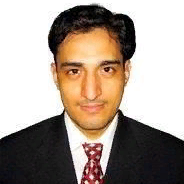International Journal of Wireless and Microwave Technologies (IJWMT)
IJWMT Vol. 8, No. 3, 8 May 2018
Cover page and Table of Contents: PDF (size: 854KB)
Efficient Low-Overhead Channel Estimation for 5G Lens Based Millimeter-Wave Massive MIMO Systems
Full Text (PDF, 854KB), PP.42-57
Views: 0 Downloads: 0
Author(s)
Index Terms
mmWave, Beamspace, SD, Pilot, RF chain
Abstract
Beamspace MIMO performs beam-selection which can substantially reduce the number of power-consuming radio frequency (RF) chains without perceptible performance deterioration. However, for capacity-approaching performance, accurate information of the beamspace-channel of large-size is required for beam-selection, which is contesting in case of little number of RF-chains. To overcome such problem, I proposed an efficient support-detection (SD) algorithm for channel-estimation with low pilot-overhead and short number of RF chains. The key idea of SD-algorithm is to divide the whole issue of beamspace channel-estimation into a series of sub-issues, where each of them considers only one sparse channel-component. The support of each channel component is detected reliably by deploying the sparse structure attributes of the beamspace-channel. The effect of this channel-component is eliminated from the whole channel-estimation issue. Thus, the sparse beamspace-channel can be estimated with low pilot-overhead. Simulation Results shows that the proposed schemes perform much better than the conventional compressed-sensing (CS) schemes.
Cite This Paper
Imran Khan," Efficient Low-Overhead Channel Estimation for 5G Lens Based Millimeter-Wave Massive MIMO Systems", International Journal of Wireless and Microwave Technologies(IJWMT), Vol.8, No.3, pp. 42-57, 2018. DOI: 10.5815/ijwmt.2018.03.05
Reference
[1]R. W. Heath, N. Gonzalez-Prelcic, S. Rangan, W. Roh, A. Sayeed, “An overview of signal processing techniques for millimeter wave MIMO systems,” IEEE Jr. Sel. Top. Signal Proc., vol. 10 (3), pp. 436–453, Apr. 2016.
[2]J. Brady, N. Behdad, and A. Sayeed, “Beamspace MIMO for millimeterwave communications: System architecture, modeling, analysis, and measurements,” IEEE Tran. Anten. and Prop., vol. 61, (7), pp. 3814–3827, Jul. 2013.
[3]A. Alkhateeb, O. El Ayach, G. Leus, R. W. Heath, “Channel estimation and hybrid precoding for millimeter wave cellular systems,” IEEE Jr. Sel. Top. Sig. Proc., vol. 8, (5), pp. 831–846, Oct. 2014.
[4]A. Alkhateeb, G. Leus, R. W. Heath, “Compressed sensing based multi user millimeter wave systems: How many measurements are needed?” in Proc. IEEE ICASSP, pp. 2909–2913, Apr. 2015,.
[5]T. Kim and D. J. Love, “Virtual AoA and AoD estimation for sparse millimeter wave MIMO channels,” in Proc. IEEE SPAWC Workshops, pp. 146–150, Jun. 2015.
[6]Z. Pi, F. Khan, “An introduction to millimeter-wave mobile broadband systems”, IEEE Comm. Mag., vol. 49, (6), pp. 101-107, Jun. 2011.
[7]Ericsson, “More than 50 billion connected devices”, white paper: http://www.ericsson.com/res/docs/whitepapers/wp-50 billions.pdf.
[8]M. R. Akdeniz, Y. Liu, M. K. Samimi, S. Sun, S. Rangan, T. S Rappaport, “Millimeter wave channel modeling and cellular capacity evaluation”, IEEE Jr. Sel. Areas in Comm., Vol. 32, (6), Jun. 2016.
[9]S. Han, C. L, Z. Xu and C. Rowell, “Large-scale antenna systems with hybrid precoding analog and digital beamforming for millimeter wave 5G,” IEEE Comm. Mag., vol. 53, issue no. 1, pp. 186–194, Jan. 2015.
[10]Y. Zeng, R. Zhang, “Millimeter wave MIMO with lens antenna array: A new path division multiplexing paradigm,” IEEE Trans. On Comm., vol.64, issue no. 4, pp. 1557-1571, Apr. 2016.
[11]J. Brady, N. Behdad, and A. Sayeed, “Beamspace MIMO for millimeterwave communications: System architecture, modeling, analysis, and measurements,” IEEE Trans. Ant. and Propag., vol. 61, no. 7, pp. 3814–3827, Jul. 2013.
[12]J. Brady, N. Behdad, and A. Sayeed, “Beamspace MIMO for millimeterwave communications: System architecture, modeling, analysis, and measurements,” IEEE Trans. Ant. and Propag., vol. 61, no. 7, pp. 3814–3827, Jul. 2013.
[13]J. Hogan and A. Sayeed, “Beam selection for performance-complexity optimization in high-dimension MIMO systems,” in Proc. CISS, Mar. 2016, pp. 337–342.
[14]L. Yang, Y. Zeng, and R. Zhang, “Efficient channel estimation for millimeter wave MIMO with limited RF chains,” in Proc. IEEE ICC, May 2016, pp. 1–6.
[15]L. Dai, X. Gao, S. Han, C.-L. I, and X. Wang, “Beamspace channel estimation for millimeter-wave massive MIMO systems with lens antenna array,” to appear in IEEE/CIC ICCC, Jul. 2016.
[16]Z. Xiao, T. He, P. Xia, and X.-G. Xia, “Hierarchical codebook design for beamforming training in millimeter-wave communication,” IEEE Trans. Wireless Commun., vol. 15, no. 5, pp. 3380–3392, May 2016.
[17]S. Hur, T. Kim, D. J. Love, J. V. Krogmeier, T. A. Thomas, A. Ghosh, “Millimeter wave beamforming for wireless backhaul and access in small cell networks,” IEEE Tran. Comm., vol. 61, (10), pp. 4391- 4403, Oct. 2013.
[18]D. Zhu, J. Choi, R.W. Heath, “Auxiliary beam pair enabled AoD and AoA estimation in mmWave FD-MIMO systems,” IEEE Tran. Wire Commun., arXiv preprint arXiv:1610.05587, Oct. 2016.
[19]Z. Marzi, D. Ramasamy, U. Madhow, “Compressive channel estimation and tracking for large arrays in mm-wave picocells,” IEEE Jr. Sel. Top. Sig. Proc., vol. 10, (3), pp. 514-527, Apr. 2016.
[20]J. Lee, G. T. Gil, Y. H. Lee, “Channel estimation via orthogonal matching pursuit for hybrid MIMO systems in millimeter wave communications,” IEEE Tran. Comm., vol. 64, (6), pp. 2370-2386, Jun. 2016.
[21]T. Kim, D. J. Love, “Virtual AoA and AoD estimation for sparse millimeter wave MIMO channels”, IEEE SPAWC Workshops, Jun. pp. 146–150. 2015
